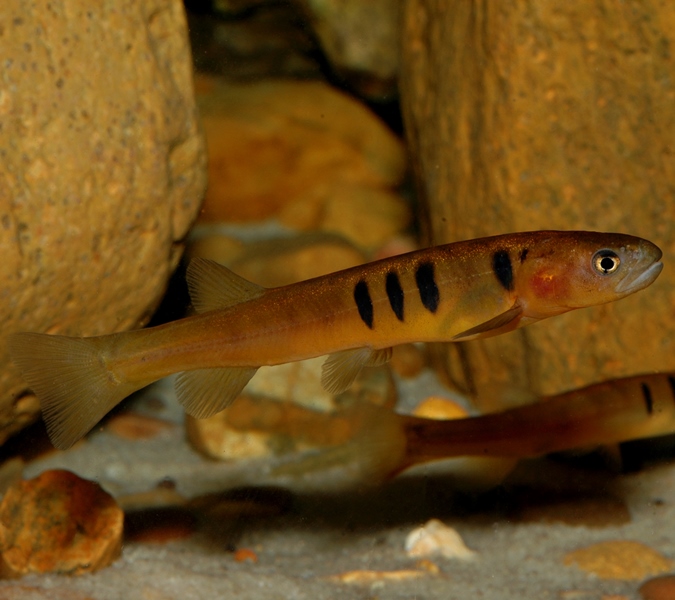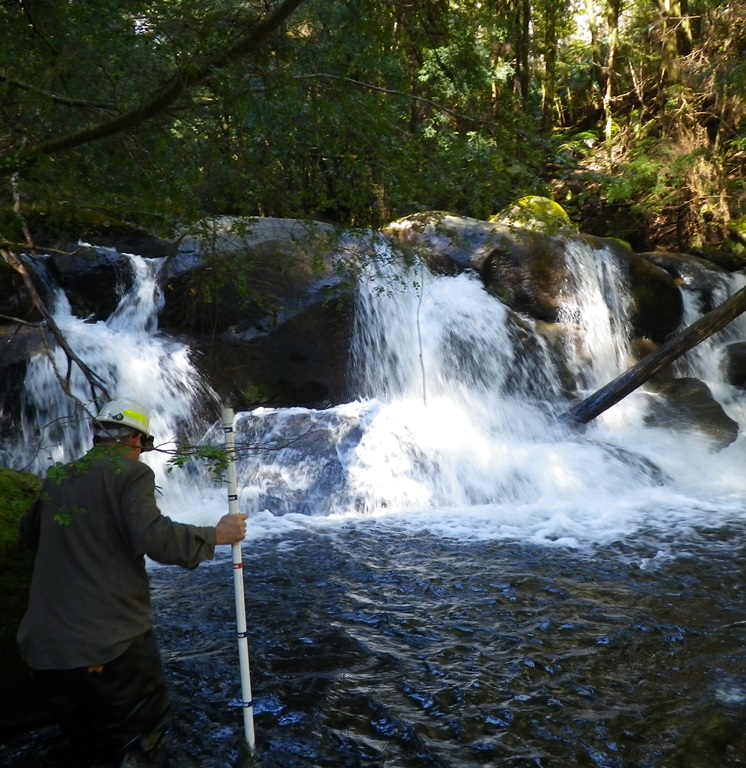The Barred Galaxias (Galaxias fuscus) is a small fish restricted to the Goulburn River system in Victoria. Predation by introduced Brown Trout (Salmo trutta) and Rainbow Trout (Oncorhynchus mykiss) is the main threat to this nationally threatened species; trout are able to eliminate an entire population within 6–24 months. Current Barred Galaxias populations are isolated from each other and restricted to short sections of narrow headwater streams, above instream barriers that limit the colonisation of trout from downstream during normal flow conditions. Nevertheless, trout sometimes access populations after breaching these barriers during large flow events or due to humans moving fish.
A major way that populations of Barred Galaxias are protected from trout incursion is the construction and modification of instream barriers. Trout detection surveys also occur annually above instream barriers, where trout are removed and relocated downstream of barriers. ARI has analysed 22 years of trout survey data to determine the effectiveness of this strategy to protect Barred Galaxias populations. Factors that may influence the effectiveness of barriers were also considered, including type (e.g. natural vs artificial) and proximity to towns.
Trout detections above barriers declined over time, suggesting that trout removal and relocation is an effective way of keeping trout numbers low and preventing populations from becoming established. Natural barriers, such as waterfalls, were more effective than artificial barriers, such as weirs. Artificial barriers also tended to be closer to towns, suggesting that human aided dispersal contributes to their lower effectiveness.

Prioritising sites close to towns for surveys and trout relocation, while reducing surveys where the probability of trout incursion is low, will more effectively target the more vulnerable Barred Galaxias populations. Artificial barriers also require ongoing maintenance to remain effective. This project was funded by the State Government.
This work has continued under the Victorian Government’s Biodiversity On-ground Action - Regional Partnerships Landscapes and Targeted Action, and Biodiversity Response Planning programs - see fact sheets below for more detail:
- Recovery actions for seven endemic and threatened Victorian galaxiid species fact sheet (PDF, 657.1 KB)
(accessible version (DOCX, 3.4 MB)) - Conservation of endemic and threatened Victorian galaxiid species fact sheet (PDF, 685.2 KB)
(accessible version (DOCX, 2.2 MB))
For more information contact: tarmo.raadik@delwp.vic.gov.au
Page last updated: 29/01/25
